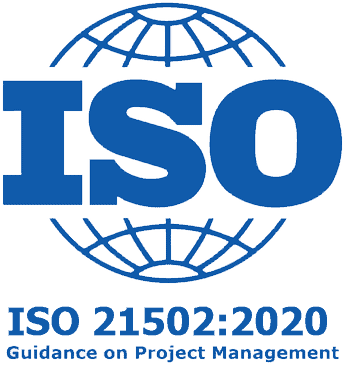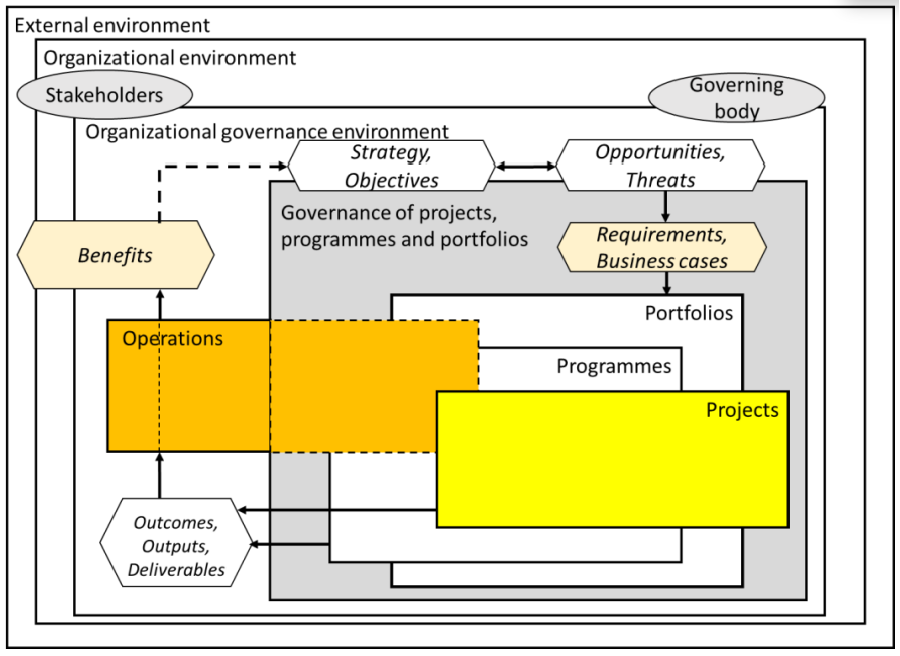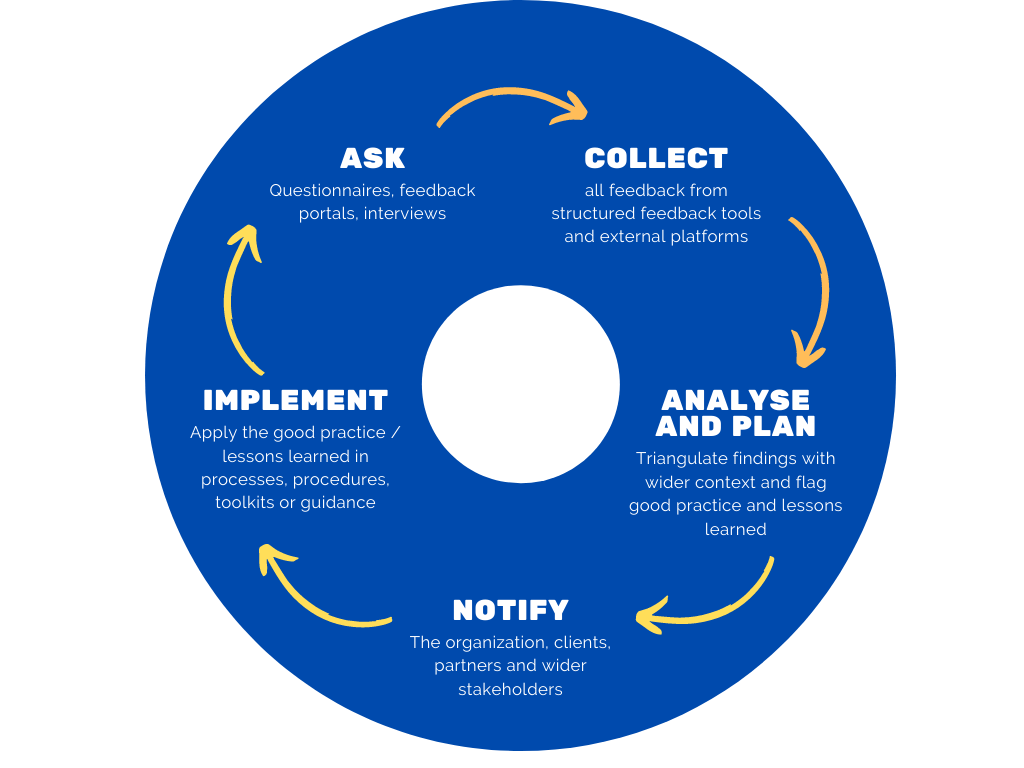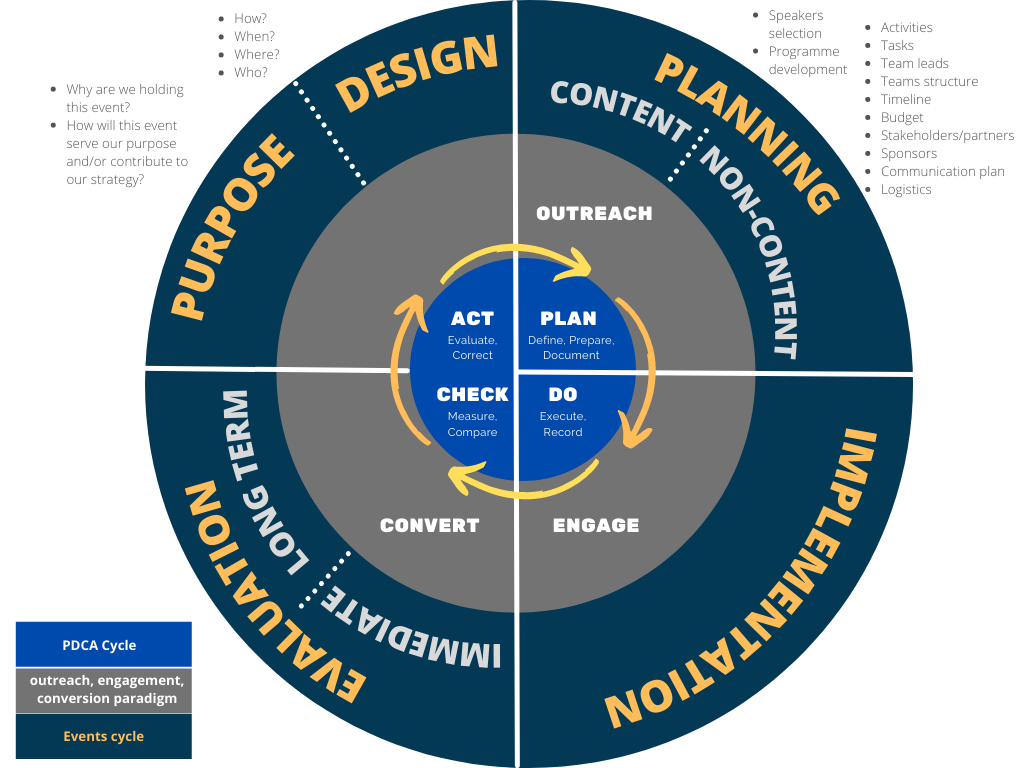QA Events
Report brief
Quality Assurance in Event Management
Original report by:
1. Operational context
One of the non-training services offered by the Centre is the facilitation of meetings and events. The portfolio of these event management services has expanded rapidly in recent years on the back of non-traditional formats such as virtual fairs and online conferences. The portfolio is poised for further growth in 2022-23, as it is likely that particularly online events with a global audience will meet demand due to environmental and health and safety concerns but also cost considerations.
To consolidate and further grow its footprint in the segment for event management services in the coming years, ITCILO has sought expert advice on building a robust channel-specific quality assurance system founded in the quality principles promoted by the International Standard Organization.
The purpose of a quality management system
is to embed continuous improvement into the overall system. So the goal is to develop an innovative approach that works well, captures excellent practice as well as lessons learned, which can be shared and incorporated into the overall system.
- For internal purposes: Did we reach our objective? (purpose/outcomes) how do we know if our events are successful? (evaluation measures) Are we spending our budget efficiently? (financial results) Are our events better than other similar organisations? (benchmarking)
- For external purposes: are our clients happy with our services? What feedback have they given us? Will they use us again?
2. Event management in the ITCILO
The ITCILO’s 2022-23 programme and budget proposals highlights ‘a new service mix’ that says ITCILO plans on shifting from a single focus on individual capacity development, to institutional capacity building for both ILO constituents and partner organisations. Meetings and events make up one of six ‘non-training services’.
The first clear distinction in ITCILO events is between internal, and those done for/with other UN bodies.
The second clear distinction is between small scale, local or regional events, and large scale global events.
The third distinction is between Business to Business (B2B): events that are built around the needs of a paying institutional client, and Business to Consumer (B2C), where ITCILO markets an event directly to paying customers.
ITCILO is likely to organise events that:
- Communicate a clear purpose to a clearly defined community likely to be interested in the topic(s).
- Inform, stimulate, develop a community feeling, and change practice beyond the event itself.
- Attract an appropriate community of people with a shared and, in different ways, informed, interest in the event’s topic(s).
- Attract expert speakers, influencers and key industry people
- Provide opportunities to meet with others who have similar interests to their own, to learn about new research and development in their area, and to increase their understanding of the topics discussed.
- Are delivered in a financially sustainable manner.
- Comply with global standards of good governance for international public sector organisations.
- Attract between 100-5000 participants.
Different types of events will have different approaches, and different desired outcomes, but all events should be recorded in a common way, and circulated across the organisation to ensure learning is organisation-wide.
The number of different stakeholders can also add complexity to these dichotomies. It is clear that a ‘one size fits all’ solution to quality assurance in ITCILO events is an inadequate response. However, there needs to be a common and consistent process to achieve quality in all ITCILO events.
All events need to follow a systematic approach through Deming’s Plan, Do, Check, and Act.
Some events will be less successful than others. Less successful events should be treated as learning opportunities.
More about ITCILO event managment services
Suggested taxonomy for ITCILO event types:
(face-to-face, hybrid, or online)
-
Conferences
-
Exhibitions / Fairs
-
Workshops
-
Seminars / Webinars
-
Retreats
3. ISO 21502 as a proposed standard for ITCILO events
The principle can be directly applied to event management with a standardised system for registration, attendance, engagement in specific sessions, pre-event and post-event participant and presenter feedback questionnaires to support the collation and interpretation of data.
the ISO 21502 presents a list of considerations:
- functional and physical organisational over other prevailing structures;
- conflicting procedures, processes, plans and systems;
- communication methods and cycles;
- technology availability and access;
- the context of operations of the organisation;
- balancing and optimising the social, economic and environmental characteristics;
- administrative and authorisation systems;
- sustainability and oversight requirements.
Each of these have some weight and need for consideration in the planning and development of an event.


The Project Management ISO Context The New ISO 21502 (pmworldlibrary.net)
* The Centre supports the consultants' recommendation of using the Project Management ISO context for ensuring the quality of Event Management Services. This approach provides the Centre with a replicable and reusable model that draws on the Plan, Do, Check, Act (PDCA) cycle and provides clear guidelines and considerations for developing appropriate standard quality assurance systems for other types of non-training services offered by the Centre.
Project management should be performed through a set of processes and methods that should be designed as a system and should include practises necessary for a specific project
- ISO 21502 -
There is a number of other related ISO standards that can contribute to a quality management system for ITCILO:
- ISO 9001: 2015 Quality Management Systems
-
ISO 20700: 2017 Guidelines for Management Consultancy Services
- ISO 20121: 2012 Event sustainability management systems
-
ISO 21502: 2020 Project, programme and portfolio management
-
ISO 29993: 2017 Learning Services Outside Formal Education
4. Global good practice
Events are generally approached through a project management frame. Quality management should be integral throughout the whole process. It does not begin with the event itself: it begins as soon as the idea for the event is formed.
Despite the differences in scale, requirements and budget, all events share some central principles. All events:
- Need to have a purpose
- Need to be designed
- Need to be planned in detail
- Need to be well managed in implementation
- Need to be evaluated
All of these, done well, and with any lessons learned recorded, provide an iterative path to ongoing improvement of all aspects of an organisation’s event preparation, implementation and evaluation for future events.
Each of these areas will generate a great deal of data, which needs to be analysed, and where required, findings need to be used for improving the quality of future events.
Particularly when working with partners there is real value in committees and checklists, clearly assigning tasks, roles and responsibilities and ensuring everything is covered.
A formalised ITCILO events community of practice for sharing good practice, in addition to the quality improvement process should be considered.
A quality management approach within an organisation:
- develops a set of processes that are common to all events the organisation is likely to hold.
- provides consistency and coherency in applications for budget, and other, approvals, agreements with partners and other issues related to organisational process.
- promotes the identity / brand of the organisation planning the event, through the provision of a clear infrastructure to facilitate the planning, delivery and ongoing evaluation of the events.
- flags synergies across the organisation where perhaps activities could be joined, or intelligence and stakeholders shared to support the success of other teams’ events.
The quality improvement process is the feedback loop that constantly updates the quality assurance system with innovative successful practice, and can provide ‘warnings’ about where things can go wrong, or issues that need particular attention.

The feedback loop
Events are kinetic. An event is a dynamic social activity, and even if you are clear about your purpose and role in the event; different social interactions, different personal expectations of the event, and even what you think of the catering, or the signposting, will impact on what you take from the event.
Since early 2020, with the onset of COVID-19, there have been massive changes in the events industry. It seems likely that in the future, the number of purely face-to-face events will reduce, and ‘hybrid’ events, with both face-to-face and online aspects, will increase in number. And online delivery will become the standard for many events.
Online events can attract many participants and presenters that would not be able to attend a face-to-face event. They are much cheaper to put on, and, technology permitting, can provide asynchronous access to presentations beyond the event itself. It is more difficult to create a sense of community with an online event, and there is less of an element of serendipity, (the fascinating person you sat next to at lunch) than a face-to-face event can permit. Hybrid events should be able to provide the advantages of both: the wider outreach available through online, together with the serendipity of face-to-face events. But they are more complex to manage successfully for both audiences.
Common elements for all events include:
- Early engagement with key partners and stakeholders
- Clear purpose and design
- Technology
- Timing
5. Recommendations
The recommendations are based on the ISO quality standards for Project, Programme and Portfolio Management (21502), but will also fit within the Plan, Do, Check, Act paradigm already in place within ITCILO. Other relevant ISOs are referred to as well. The recommendations are based around the process map:
- Purpose and design;
- Planning (non-content: logistics, marketing and communication, etc);
- Planning (content and formats);
- Implementation;
- Evaluation (immediate);
- Evaluation (longer term).
The six stages are matched to the PDCA paradigm, related ISO standards, and with the outreach, engagement, and conversion paradigm used by the advocacy and communications section of ITCILO.

Integration of PDCA, outreach/engagement/conversion paradigm within a project cycle
1. Develop a clear baseline for decisions on undertaking events
Events that:
- communicate a clear purpose to a clearly defined community
- inform, stimulate, develop a community feeling, and change practice beyond the event itself
- attract an appropriate community of people
- attract expert speakers, influencers and key industry people
- provide opportunities to meet with others who have similar interests
- are delivered in a financially sustainable manner
- attract between 50-5000 participants
2a. Establish a central events quality 'secretariat’
- to provide a central repository of reports on events, lessons learned, checklists, samples of evaluation forms, etc.
- to provide further quality data analysis, updating of quality guidelines and disseminating these across the organisation
2b. Establish an events ‘centre of excellence’
- the team will have responsibility across all teams to promote quality assurance in event management
- to implement an ongoing quality improvement process
- to provide training, internships, and advice
3. Use ISO 21502: Project, Programme, and Portfolio Management as the primary quality standard
Note: Other ISO standards can be used for particular aspects of an event.
Purpose and Design
4. Establish a quality assurance system for events
It should answer the following questions:
- How do we know if our events are successful?
- Are we spending our budget efficiently?
- Are our events better than those of other similar organisations?
- Did we reach our objective?
- Are our clients happy with our services?
- Will they use us again?
- What feedback have they given us?
5. Embed a quality assurance system into the event planning, implementation and evaluation systems
- To assess each event against a set of appropriate criteria.
- Gather, analyse and interpret data.
- Use the analysis to disseminate successful approaches and address shortcomings.
6. Develop a taxonomy of event types, client relationships, budget considerations, event formats
- These will provide a ‘mix and match’ analysis for many types of events, and the basis for measuring the quality of the event.
- Templates/guidelines should be developed for each stage of event management, in relation to large/small, internal/ external, B2B or B2C.
7. Develop a checklist of design considerations before detailed planning of an event begins
Event Design: basic considerations
- Face-to-face, online, or hybrid? Why?
- When?: is there sufficient planning time? Is it at an appropriate time for the proposed audience?
- Where?: (face-to-face events only). Where is your anticipated audience?.
- Who? Would we like to present? Would we want to attend?
- Why?... would people want to present/attend?
- How will we run the event? What can we do to make it attractive to the people we want to attend?
- Do we have the skills, and financial/human resources to do the event well?
8. Develop a feedback loop that constantly updates the quality assurance system
To highlight innovative successful practice, and provide ‘warnings’ about where things can go wrong, or issues that need particular attention.
9. Develop a Customer Relationship Management (CRM) database for events
If ITCILO already has a general CRM database, we recommend a ‘tagging’ of appropriate contacts with an ‘Events’ tag, and specifying their areas of interest with regard to the thematic areas the different events address
Planning (Non-content)
10. Establish a planning group within the team organising the event, plus any external partners
This group should meet regularly before the event to assess progress, and identify any issues as early as possible.
11. Develop common guidelines for event (non-content) planning
- Budget
- Stakeholders/partners
- Sponsors (if appropriate)
- Communications and marketing
- Logistics
The progress comments for each area should be updated e.g. each week, and exceptions reported to the planning team.
Planning (Content and Professional)
12. Develop an initial programme outline based on the event purpose first
Proper consideration should be given to:
- Speakers/moderators
- What kind of formats are most appropriate for the expected participants
This is best done by people with a good understanding of the topic area, with skill and experience in identifying, attracting and managing high quality speakers/presenters, ensuring that they have relevant expertise and profiles, and will provide a good experience for the participants.
The ‘flow’ of the conference also needs to be carefully considered.
13. All speakers/moderators should be briefed
not only on their part in the event, but on the overall purpose of the event, who the audience will be, where their contribution ‘sits’ in the overall form of the event, and to consider what their presentation will contribute to achieving the purpose, and the ‘learning’ they are expecting participants to gain from their contribution.
14. Give consideration to the participants whom the event hopes to attract
- Clear communication about the theme and topics of the event, and who is likely to most benefit from attendance.
- Clearly identify the outcomes for the different stakeholders, to ensure that participants know what to expect at the event.
- A targeted marketing and communications campaign which includes social and other media, and promotion through partner and other organisations to ensure that the largest number of potential participants are aware of the event.
15. The registration process should include a set of questions to provide important data
The answers can form the baseline information for the immediate post event evaluation of the success of the event for each individual participant.
Examples of possible questions:
- How did you hear about this event?
- What is your main reason for attending this event?
- Why did you choose this event?
- Which sessions are you most interested in?
16. Develop an evaluation strategy for each event
to develop and identify indicators that can be monitored and tracked, pre, during and post the event.
A sample of indicators:
- Likes, comments, shares
- Mentions
- Monitoring use of event hashtags and associated hashtags;
- Articles in the media referencing the event;
- Social media connections to the ITCILO or Linkedin event page;
- Social media profile checks of the contributors and speakers;
- Establishing the Net promoter score
Implementation
17. Develop a contingency plan for foreseeable hitches in the delivery of the event
with specific people responsible for particular areas to ensure a smooth event experience.
Contingency considerations
- Stewards for evacuating the building if needed.
- Communication with online participants outside the event platform in case of issues.
- Venue not prepared in time
- Speakers not showing up.
- Catering management.
- Tech failure in general, or in specific rooms/sessions.
- Overcrowding in sessions.
- Management of online networking spaces.
- ‘Help desk’ both at in person conferences, and online etc.
- Acts of God
Evaluation (Immediate)
18. Develop a ‘standard’ process for reviewing, and recording, both external and internal evaluation
To be held in a central ‘secretariat’ whose role is to both circulate learning from the event to the wider organisation, and to update the quality improvement guidance for event management across the organisation.
Evaluation (longer term)
19. Initiate longer term evaluation of events as standard practice
The evaluation form should be short, and easy to complete. Personal details, include the participants ‘objective’ in attending the event, and ask if this was achieved, partly achieved/not achieved. What has changed since you attended the event? To increase the number of responses, incentives could be provided.
Examples for KPIs for long term evaluation
- that an idea (or case-study or best practice) presented at the conference has been adapted in another context;
- two or more participants are now working together on a new project/idea/innovation;
- an initiative has gained more traction and a bigger audience;
- a start-up has attracted funding and support;
- policy makers have been shown new evidence that they adopt to address solutions;
- a new community of practice has been created.
- new business for ITCILO and/or its event partners arising form the event
- increased professional profile for ITCILO and/or its event partners arising from the event.
Quality improvement process for institutional capacity building
20. Prepare an evaluation ‘exception’ report following an event, and its initial evaluation
- To be prepared (to a common format) by a senior member of the event team (and signed off by the person in charge).
- This lists only aspects of the event, whether in the planning, content, implementation or evaluation, where things were noticeably better than expected, and should enter the quality process as an example of ‘good practice’.
- Other aspects, where there were particular problems or where things did not go as planned, will be listed as areas to pay particular attention to in future events.
21. Equipping the teams with quality ‘toolkits’
Development of the initial draft toolkits is devolved to the teams with most experience of a particular type of event.
Measuring impact, and the use of data
22. Develop a clear and common strategy for the collation of meaningful pre- and post-event data
Also a longer term evaluation strategy, which can identify common trends across events, in terms of connected impacts in the longer term, for example, inter- and intra-organisational collaboration, publication of research papers, promotion, job / role change linked to engagement in the event.
A quality assurance system underpinned by a culture of quality improvement, primarily through the application of the “Plan, do, check, act” cycle adopted by the ISO and referenced by ITCILO, and supported by a clear evaluation strategy, is core to the continuous innovation and development of the event provision.
How this is developed and implemented is key not only to the continuous improvement in quality of the events at ITCILO but in the measurement of their success and impact.
6. The way forward
In order to ‘embed’ quality assurance in event management, a clear process for recording evaluation of event management needs to be established, together with a process for entering the learning into the ‘corporate memory’.
Follow a staged approach to the implementation of the recommendations. Each step below is dependent on the previous steps having been done.
Decide which recommendations will be acted on, in particular, whether to use ISO 21502 as the basic quality measure closely linked to the PDCA system.
- Identify a small number of upcoming (different types of) events to pilot approaches to event management recommended in this report:
- Develop toolkits for different types of events, with associated KPIs and a close record of the processes in the planning, implementation and evaluation of the events.
- Individual event teams will probably require additional support to do this in the first instance, possibly by the proposed secretariat.
- The quality documentation is to be updated after the events.
Establish a nascent ‘events secretariat’. This person/group will use the learning from the pilot events to develop a first draft of an event quality management documentation.
Socialize the event documentation for use across the organisation. This ‘training event’ will also follow the quality guidelines being proposed.
The ongoing rollout and implementation of the new quality management approach.


